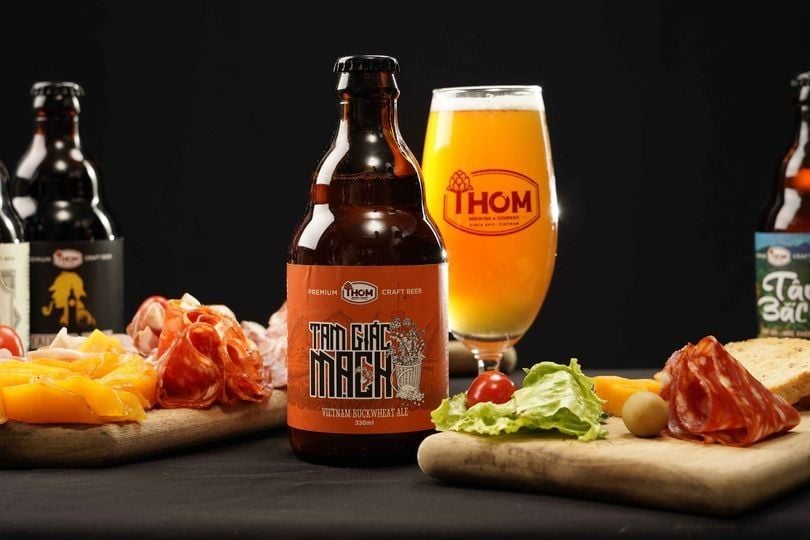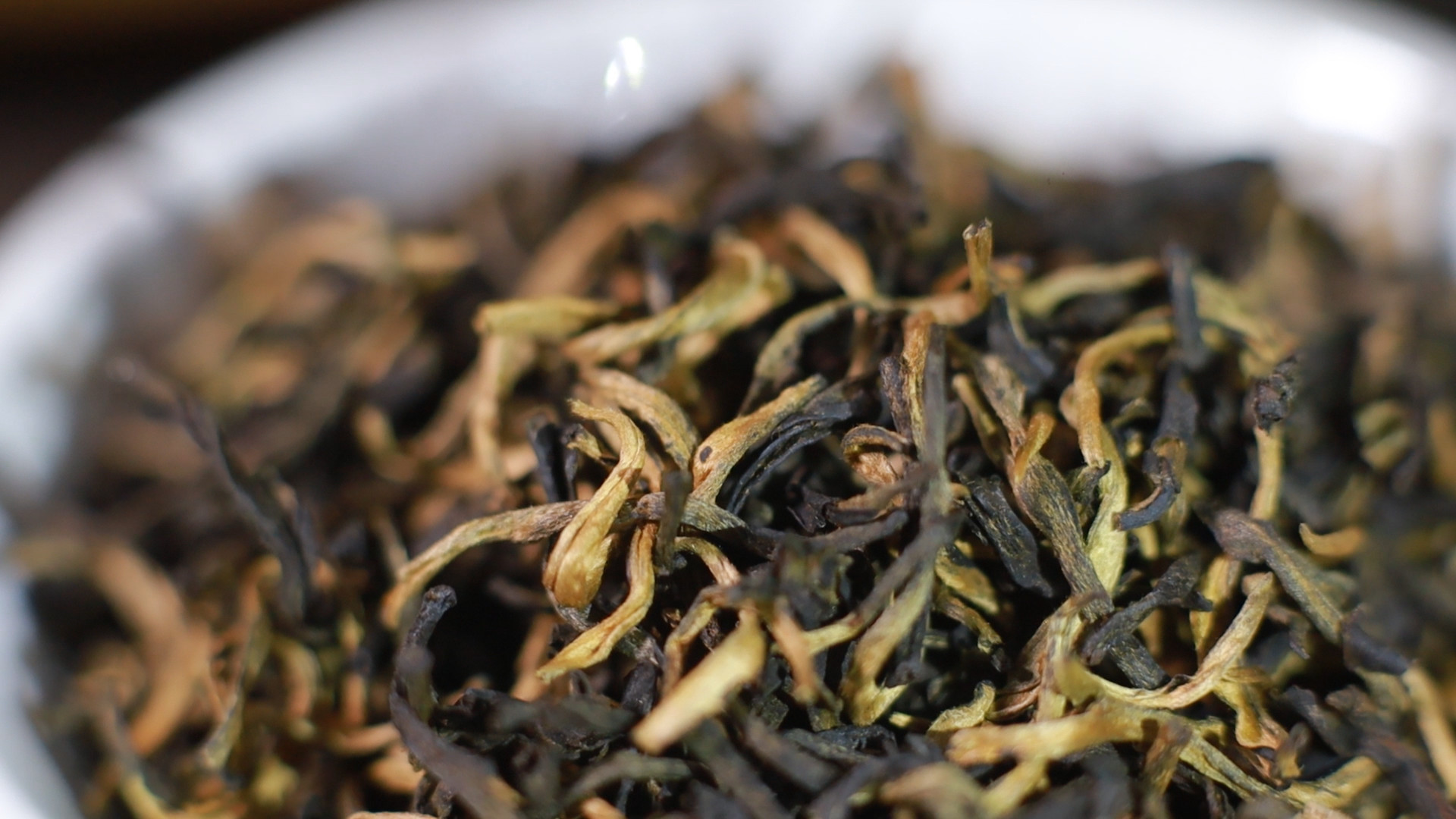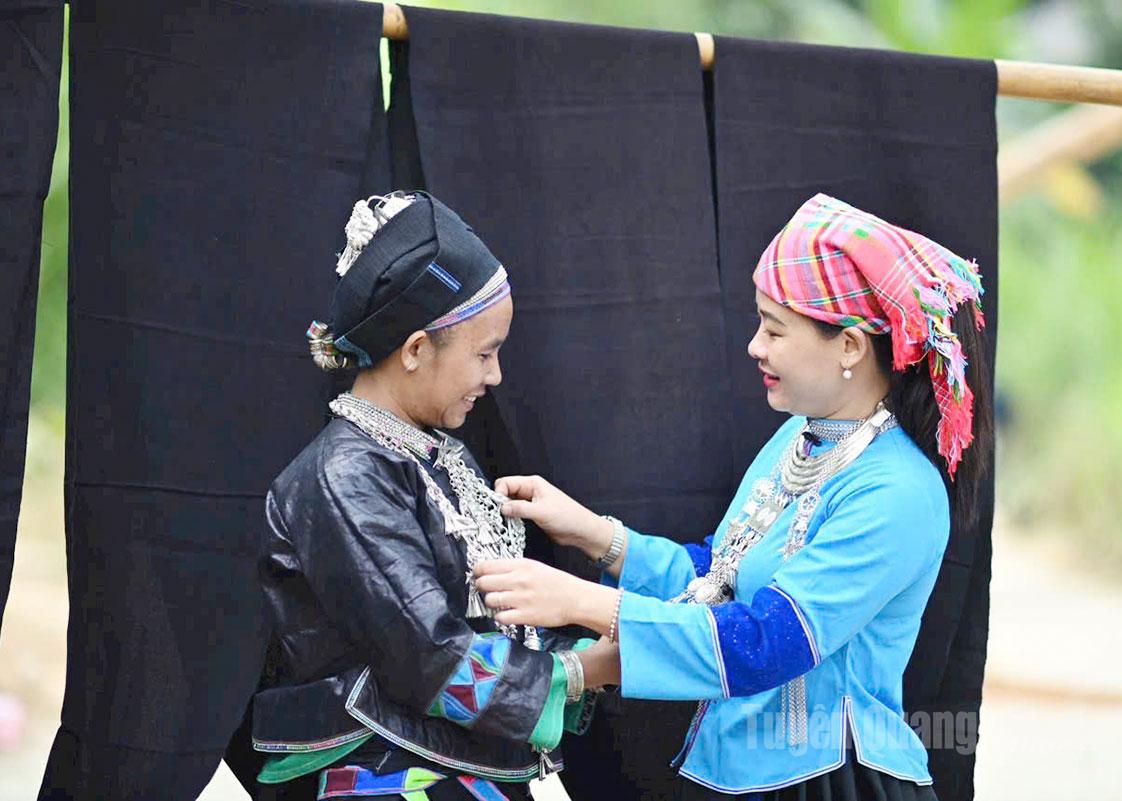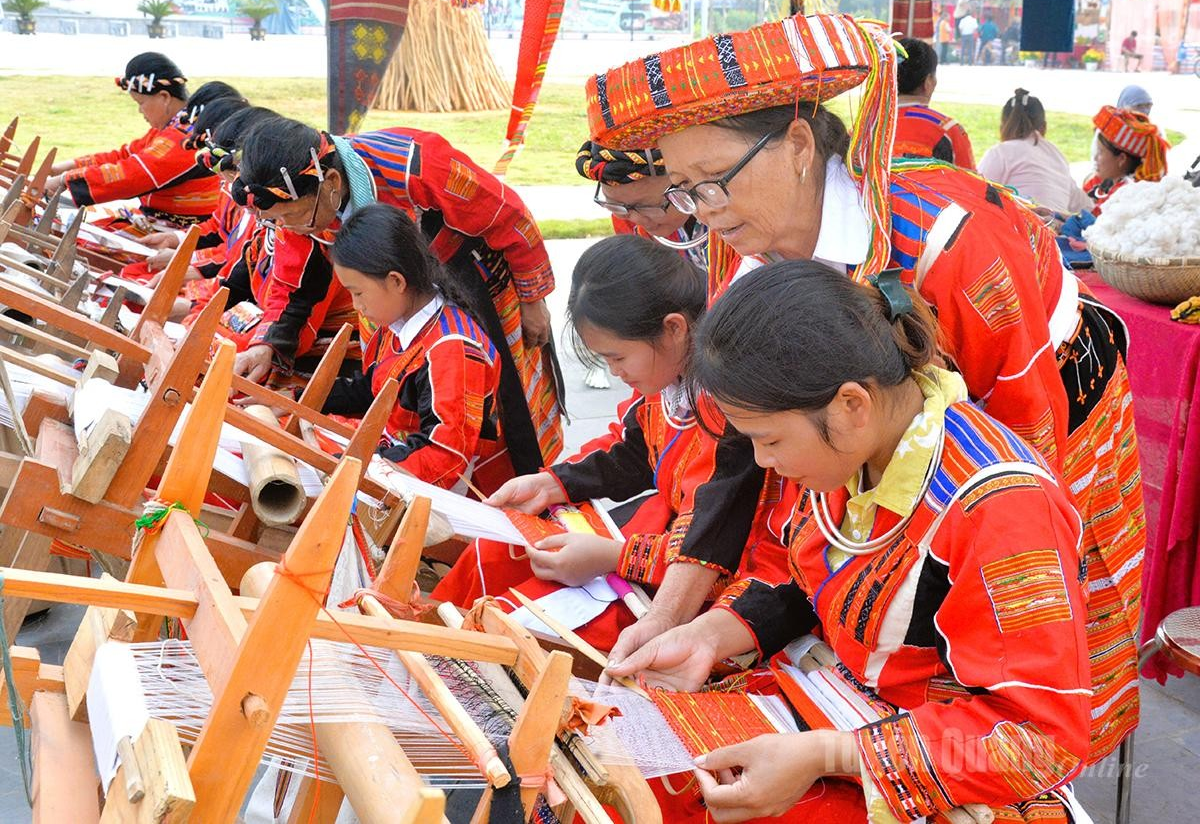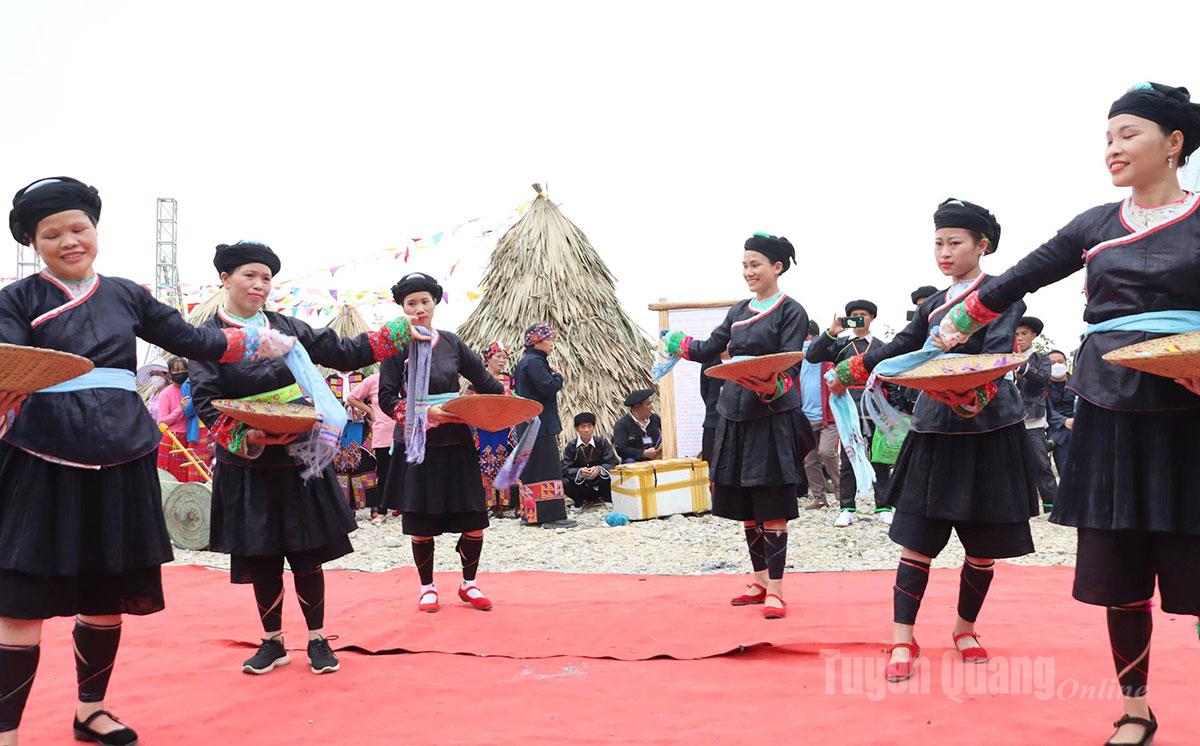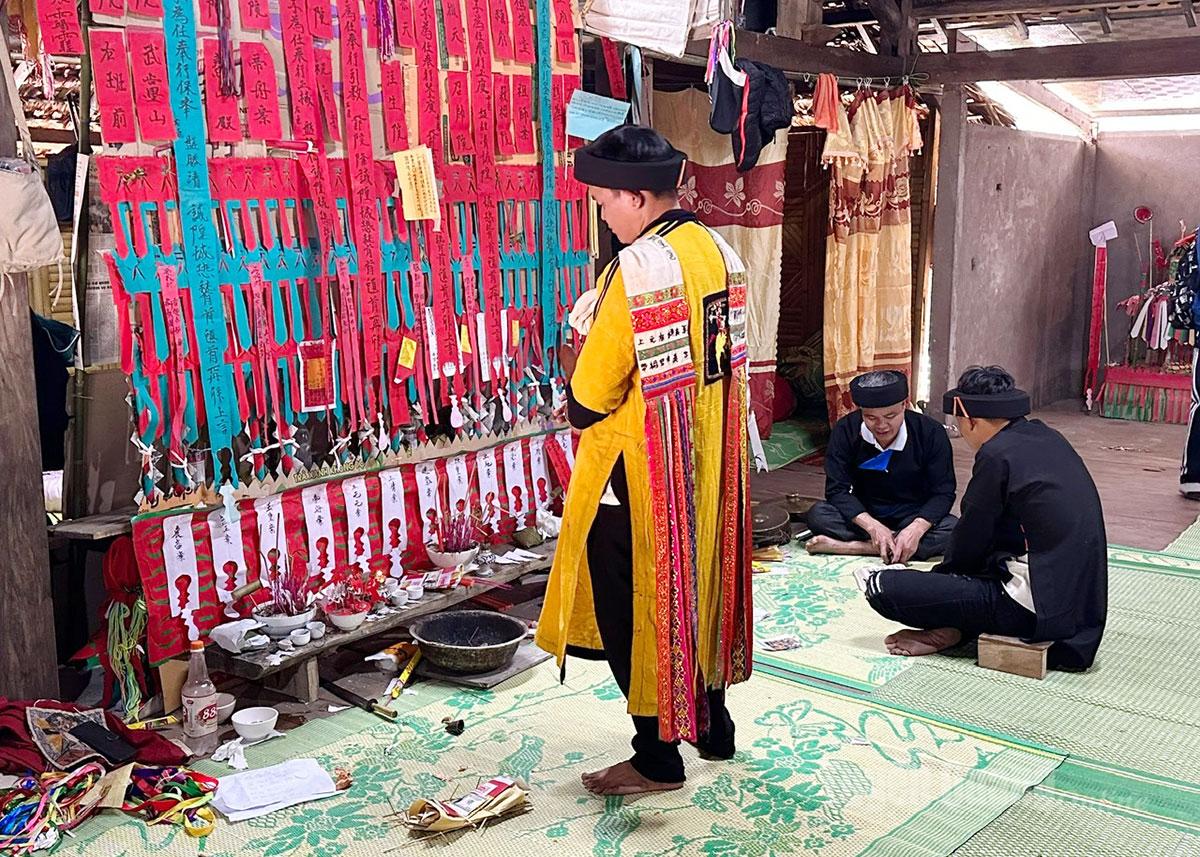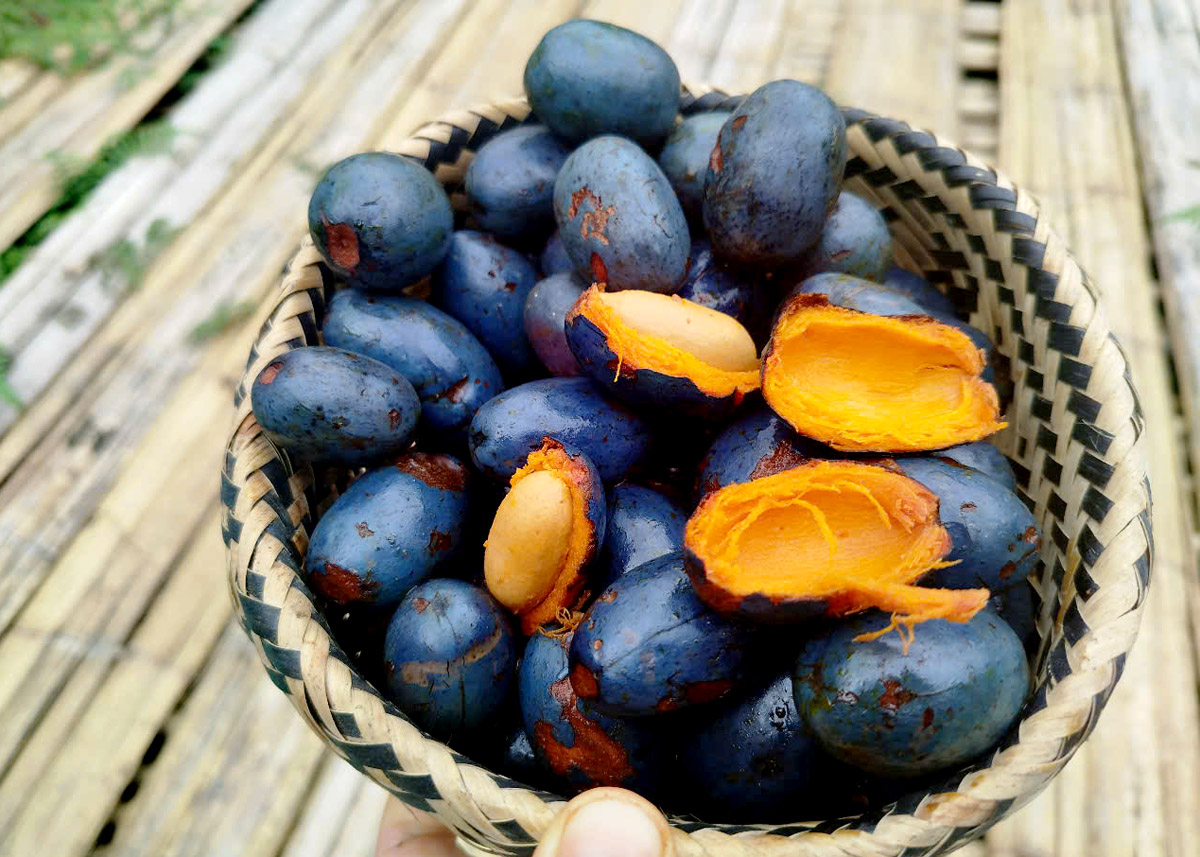
In the highland villages, when winter arrives with a bit of chill, it’s also the season for wild mountain palm fruit. The season doesn’t last long. Although it takes time for the fruit to grow, it ripens quickly. When the time comes, villagers begin harvesting palm fruit and blanching it in hot water, a traditional method to remove its bitterness and make it edible. The thick, soft, fragrant, and nutty flesh of the glutinous palm fruit makes it a beloved seasonal delicacy.
The palm tree is deeply tied to the lives of ethnic communities in the former Ha Giang highlands. In areas with many hills, nearly every roof is once thatched with the broad leaves of this forest tree. The fruit is shaped like a larger, rounder version of the canarium, with thin, dark-purple skin and a big seed, growing in clusters on flower stalks high atop the tree.
When harvest season comes, people leave early in the morning with sacks, knives, and a small aluminum pot to blanch the fruit on the spot. At lower trees, they use bamboo poles to shake down a few fruits for testing. If they taste good, they’ll harvest the rest. For trees towering five to ten meters high, rough and thorny, climbing is the only option — a risky task, as old leaf sheaths may break off underfoot. A bamboo ladder is lashed to the trunk, held steady by two people while a nimble climber ascends. Once the fruit is shaken down, it is quickly gathered and blanched in hot water, often boiled in a small pot or bamboo tube brought along for the purpose.
It’s disheartening to climb such heights only to find that the fruit isn’t good, but when it’s sweet, aromatic, and fatty, it's worth all the effort. Harvesters remember which hills bear the best fruit for the next season. A single tree can yield 3 to 5 fruiting branches, and in a good year, up to 70 kilograms, enough for both home consumption and sale.
In the past, palm fruit also helped locals survive the lean months. During the hunger season, this fruit, boiled in large pots from morning till noon, releasing a golden oily layer on the water, became a lifeline. Children remember those pots of blanched palm fruit with their rich, fatty broth like lard. Adults would tie up about 25 fruits per bundle, carried in bamboo baskets to sell at the town market. Kids at home would get a basketful as breakfast. The fruit isn’t greasy and can be eaten in quantity; sometimes, when it’s particularly good, even the skin is eaten.
Its natural oil was once collected with chicken feathers and stored in jars as a cooking substitute during the long winter. That same oil was also applied to children's hair to repel lice and give it a silky shine.
The palm fruit, when blanched in water around 70°C, is ready to eat. Though simple in preparation, some people use its flesh to make palm sticky rice or palm cakes — rare and cherished seasonal treats. Today, as life has improved, the fruit has become a nostalgic delicacy, sought after more in the cities. Traders often harvest in bulk and sell the fruit for others to blanch and sell at local markets. Sold by the bag or by weight, it brings welcome income to mountain families during the agricultural off-season.
Even now, the earthy flavor and forest aroma of blanched palm fruit remains a reminder of the mountains - and of the warmth of winter in the highlands.
Nguyen Thanh Hieu
Vietnamese data source: Bao Tuyen Quang

